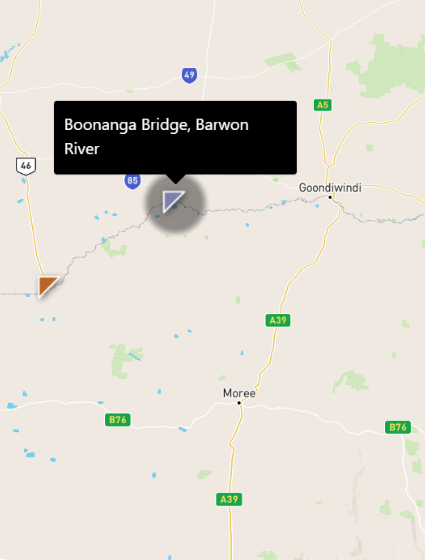ABOUT THE BRIDGE:
A low timber beam bridge was built near the current bridge location in the 1890s though this was damaged in the 1921 flood and was only patch repaired thereafter. Local agitation led to the construction of the current, more substantial Allan truss bridge in 1928. The construction firm is unknown but the tender was completed for £4,012.
Timber truss road bridges have played a significant role in the expansion and improvement of the NSW road network. Prior to the bridges being built, river crossings were often dangerous in times of rain, which caused bulk freight movement to be prohibitively expensive for most agricultural and mining produce. Only the high priced wool clip of the time was able to carry the costs and inconvenience imposed by the generally inadequate river crossings that often existed prior to the trusses construction.
From the late 1850s graziers had commenced utilising the areas around the Boomi River for sheep runs. The Kunopia Store was established on the Boomi River by Alex Wightman in around 1860 and initially consisted of a slab hut with holes in the walls for defence. The slab hut made way for a long shingle roof cottage, with wide awning verandahs which included the storeroom-mailroom, with services conducted by the Allison family towards the end of the 1860s. A small settlement was established in the vicinity which marked the crossing of the river and it quickly became a small service centre. A village was marked out by survey in 1889.
A water diviner found a volume of water in a portion of crown land of Kunopia and plans for the drilling of water took place and the work began in 1897 to establish a bore. The advent of the bore was a benefit to both stock and households, and it caused a lot of interest and job opportunities. Boomi came into being and the village grew, as houses, huts and shops appeared in the newly surveyed streets and town blocks.
This Kunopia Store was destroyed by fire about 1892 and a modern (for those times) homestead was built in its place, still retaining the store within the building. The Post Office became a separate entity, with various other huts, stables and sheds in place. After the turn of the century the store ceased to trade, as the village of Boomi grew and was able to offer more services.
The village has subsequently experienced a gradual decline through decentralisation of services though the region is renowned for its good merino sheep and quality cattle. Although this is marginal, graziers have been able to diversify into farming. Large scale clearing has become broad-acre farming, producing premium grade wheat, oats, barley and fodder crops.
There is a heritage park in the centre of Boomi with the steam engine used in the initial creation of the bore, a bullock dray and a display of past and present cattle brands.






